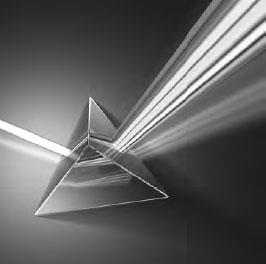LightIntroduction |
What were some early ideas about light? |
Does light travel at a finite speed or is it infinite? Is light emitted by the eye or does it travel to the eye? These questions were debated for centuries. In ancient Greece, Aristotle (384–322 B.C.E.) argued that light is not a movement. Hero of Alexandria (10–70 C.E.) said it moves at infinite speed because you can see the stars and sun immediately after you open your eyes. Empedocles (490-430 B.C.E.) said it was something in motion, so it must move at a finite speed. Euclid (325–265 B.C.E.) and Ptolemy (90-168 C.E.) said that if we are to see something light must be emitted by the eye. In 1021 Alhazen (Ibn al-Haitham) did experiments that led him to support the argument that light moves from an object into the eye and thus it must travel at a finite speed. At the same time al-Biruni noted that the speed of light is much faster than the speed of sound. The Turkic astronomer Taqi al-Din (1521–1585) also argued that the speed of light was finite, and that its slower speed in denser objects explained refraction. He also developed a theory of color and correctly explained reflection.
In the 1600s the German astronomer Johannes Kepler (1571–1630) and the French philosopher, mathematician, and physicist René Descartes (1596–1650) argued that if the speed of light was not infinite, then the sun, moon, and Earth wouldn’t be in alignment in a lunar eclipse. Despite this misconception, Kepler, in his 1604 book, The Optical Part of Astronomy, essentially invented the field of optics. He described the inverse-square law, the workings of a pinhole camera, and reflection by flat and concave mirrors. He also recognized the influence of the atmosphere on both eclipses and the apparent locations of stars. Willibrord Snellius (1580-1626) discovered the law of refraction (Snell’s Law) in 1621. Descartes used Snell’s Law to explain the formation of rainbows shortly thereafter. Christiaan Huygens (1629–1695) wrote important books on optics and proposed the idea that light was a wave. Isaac Newton’s (1642-1727) celebrated experiments using a prism to separate white light into its colors led to Newton’s Theory of Colors published in 1672. He recognized that telescope lenses would cause colored images and invented the reflecting telescope using a concave mirror that would not have this fault. Newton believed that light was made up of very lightweight particles, or corpuscles.
In 1665, a publication by Francesco Grimaldi (1618–1663) described how light could be diffracted when passing through thin holes or slits or around boundaries. In 1803, Thomas Young’s (1773–1829) experiments with one and two slits demonstrated the diffraction and interference of light. Augustin-Jean Fresnel (1788–1827) and Simeáon Poisson (1781–1827) did both theoretical and experimental work that firmly established the wave theory of light in 1815 and 1818.

